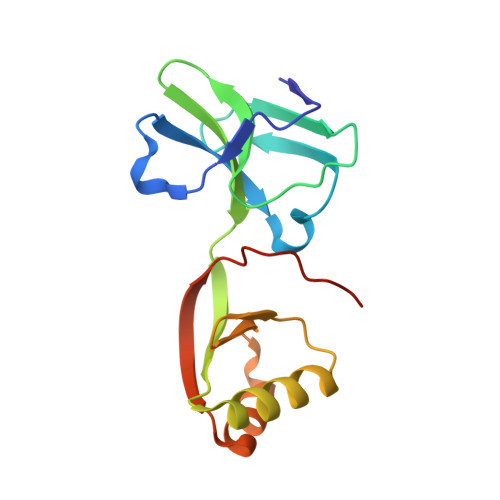Structural Basis for Ni2+ Transport and Assembly of the Urease Active Site by the Metallochaperone Uree from Bacillus Pasteurii
Reamut, H., Safarov, N., Ciurli, S., Van Beeumen, J.(2001) J Biol Chem 276: 49365
- PubMed: 11602602
- DOI: https://doi.org/10.1074/jbc.M108304200
- Primary Citation of Related Structures:
1EAR, 1EB0 - PubMed Abstract:
Bacillus pasteurii UreE (BpUreE) is a putative chaperone assisting the insertion of Ni(2+) ions in the active site of urease. The x-ray structure of the protein has been determined for two crystal forms, at 1.7 and 1.85 A resolution, using SIRAS phases derived from a Hg(2+)-derivative. BpUreE is composed of distinct N- and C-terminal domains, connected by a short flexible linker. The structure reveals the topology of an elongated homodimer, formed by interaction of the two C-terminal domains through hydrophobic interactions. A single Zn(2+) ion bound to four conserved His-100 residues, one from each monomer, connects two dimers resulting in a tetrameric BpUreE known to be formed in concentrated solutions. The Zn(2+) ion can be replaced by Ni(2+) as shown by anomalous difference maps obtained on a crystal of BpUreE soaked in a solution containing NiCl(2). A large hydrophobic patch surrounding the metal ion site is surface-exposed in the biologically relevant dimer. The BpUreE structure represents the first for this class of proteins and suggests a possible role for UreE in the urease nickel-center assembly.
Organizational Affiliation:
Laboratory of Protein Biochemistry and Protein Engineering, Ghent University, K. L. Ledeganckstraat 35, B-9000 Gent, Belgium.















